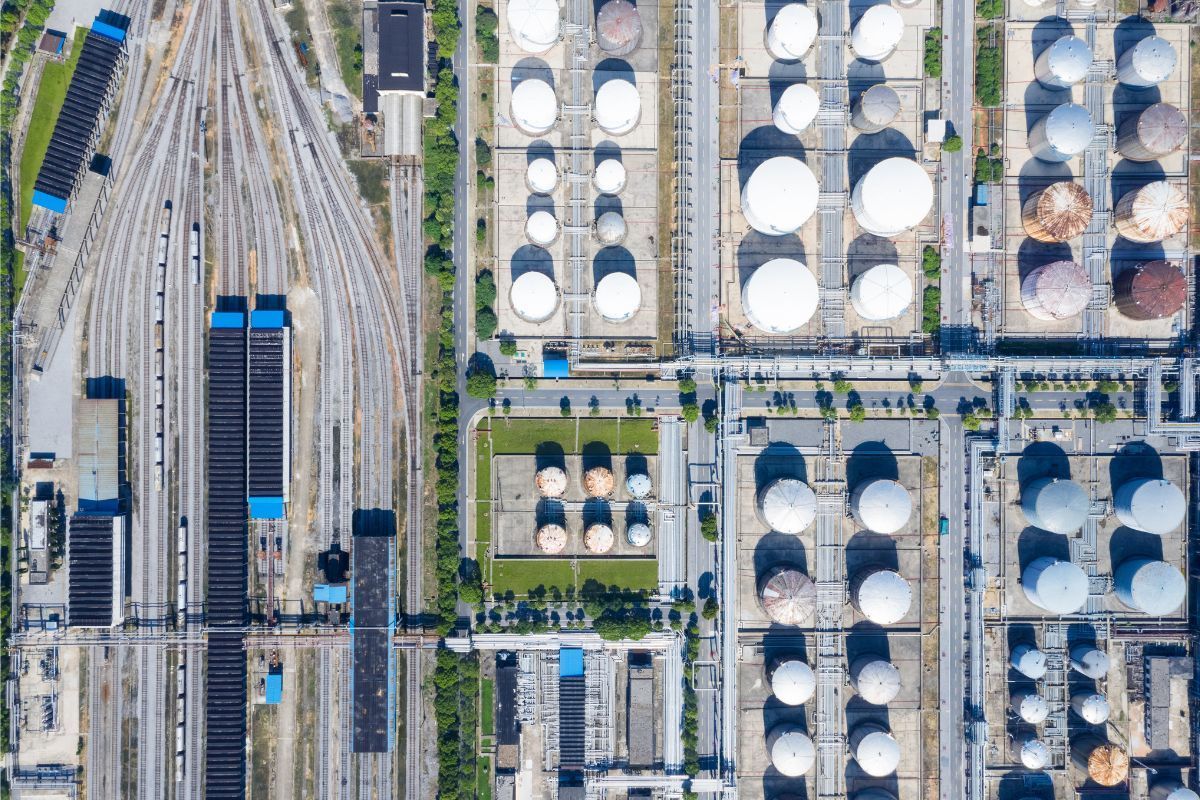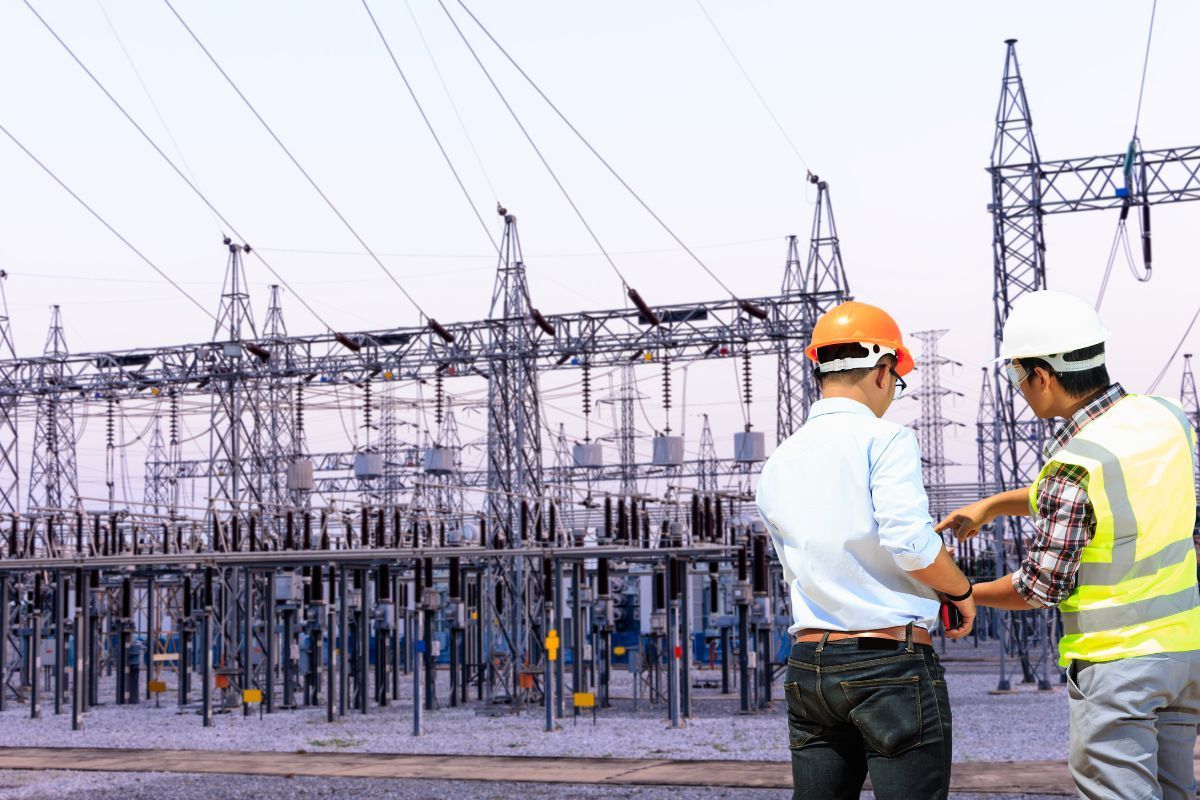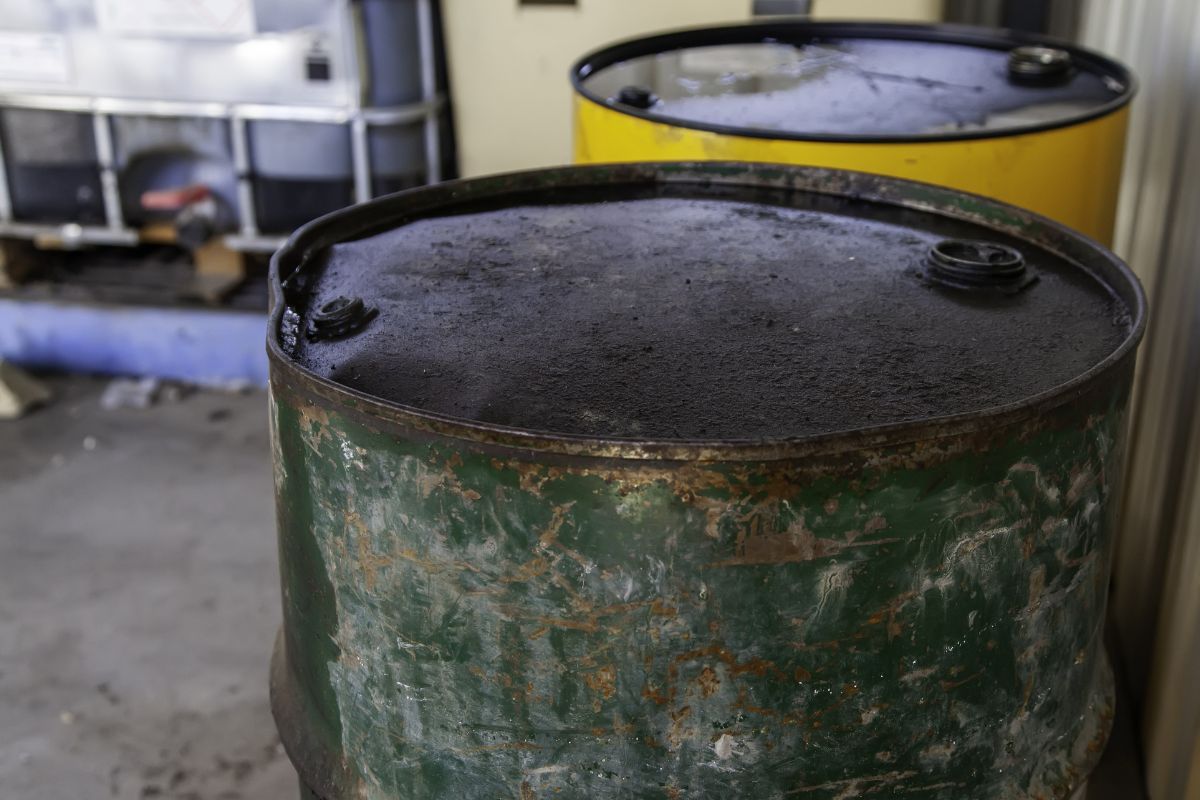How Weather-Related Events Impact Oil & Gas Insurance Costs
See How We're Different
Or Call Us: (281) 823-8262

As climate change accelerates the frequency and severity of natural disasters, industries heavily reliant on physical infrastructure are feeling the financial strain more acutely than ever. Among these, the oil and gas sector stands out due to its exposure to extreme weather events such as hurricanes, floods, and wildfires. These events not only disrupt operations but also significantly influence insurance costs, reshaping risk management strategies across the industry. In 2024, global insured losses from natural disasters surged to $140 billion, marking one of the costliest years on record according to Earth.Org. This financial backdrop underscores the urgent need to understand how weather-related events are driving up insurance premiums in oil and gas.
The Rising Tide of Weather-Related Losses in Oil & Gas
Oil and gas infrastructure is often situated in regions vulnerable to extreme weather, including coastal areas prone to hurricanes and inland zones susceptible to flooding and wildfires. These natural hazards pose direct threats to facilities such as refineries, pipelines, and offshore platforms, leading to costly damages and operational downtime.
Recent years have seen a sharp increase in weather-related disasters impacting the sector. For example, in 2023 alone, the United States experienced 28 weather and climate disasters each causing losses exceeding $1 billion, totaling $93 billion in damages according to State Street Global Advisors. While these figures encompass all sectors, the oil and gas industry is disproportionately affected due to the scale and complexity of its assets.
Moreover, the insured share of weather-related losses has grown substantially over the decades. From a negligible fraction in the 1950s, it has risen to about 25% in the last decade, with the U.S. seeing insured losses exceed 40% during the 1990s as reported by Insurance Journal. This trend reflects both increased insurance penetration and heightened risk awareness, factors that directly influence insurance pricing in the oil and gas sector.
Operational Disruptions and Financial Implications
Extreme weather events can halt production, damage critical infrastructure, and trigger environmental hazards such as oil spills. These incidents not only incur repair costs but also lead to revenue losses and potential regulatory penalties. Insurers factor these risks into their underwriting models, which has led to a reassessment of risk profiles and premium adjustments.
The financial implications extend beyond immediate repair costs; they can also affect long-term investments and project viability. For instance, companies may face increased scrutiny from investors and stakeholders regarding their climate resilience strategies. As a result, many firms are now prioritizing investments in advanced weather forecasting technologies and infrastructure upgrades to mitigate these risks. This shift not only aims to protect existing assets but also to enhance the overall sustainability of operations, aligning with broader industry trends towards environmental stewardship and corporate responsibility.
Furthermore, the increasing frequency of severe weather events has prompted a reevaluation of supply chain logistics within the oil and gas sector. Companies are now more likely to diversify their supply chains and seek alternative routes to minimize disruption. This strategic pivot is essential in maintaining operational continuity, particularly as climate models predict a rise in the intensity and unpredictability of weather patterns. As a result, firms are investing in comprehensive risk management frameworks that incorporate climate data and scenario planning to better prepare for future challenges.
Insurance Market Dynamics Amid Escalating Climate Risks
The insurance industry is grappling with the challenge of accurately pricing climate-related risks. Gianfranco Lot, Chief Underwriting Officer at Swiss Re, highlighted that the sector has historically underestimated the impact of natural disasters, stressing the importance of integrating better data to enhance model accuracy according to the Financial Times. This underestimation has contributed to sudden spikes in claims and volatility in insurance markets. As climate change accelerates, the frequency and severity of natural disasters are projected to increase, further complicating the landscape for insurers who must adapt their strategies to remain viable.
In response, property and casualty insurers in the U.S. nearly doubled their earnings in 2024, reaching $171 billion, largely driven by significant price increases that offset losses from extreme weather events as reported by the Financial Times. For oil and gas companies, this means facing higher premiums as insurers recalibrate their risk exposure and seek to maintain profitability. The ripple effects of these changes are felt throughout the economy, as businesses and consumers alike adjust to the new realities of insurance costs that reflect the growing unpredictability of climate-related risks.
Data Integration and Risk Modeling Improvements
Advancements in climate modeling and data analytics are enabling insurers to better assess the likelihood and potential impact of weather-related events. However, the complexity of oil and gas operations, combined with evolving climate patterns, continues to challenge the precision of these models. Enhanced collaboration between insurers, industry stakeholders, and climate scientists is critical to refining risk assessments and developing more tailored insurance solutions. For instance, the integration of satellite imagery and real-time data analytics can provide insurers with unprecedented insights into environmental changes, allowing for more proactive risk management strategies.
Moreover, the insurance sector is increasingly turning to innovative technologies such as artificial intelligence and machine learning to improve predictive capabilities. These tools can analyze vast datasets to identify emerging trends and potential vulnerabilities within specific industries, including energy production and distribution. By leveraging these technological advancements, insurers can create more dynamic pricing models that reflect the true nature of risk in a rapidly changing climate. This shift not only benefits insurers but also promotes resilience among businesses that are better equipped to navigate the uncertainties of the future.
Geographic and Asset-Specific Factors Driving Premium Variability
Insurance costs in the oil and gas sector vary significantly depending on geographic location and asset characteristics. Facilities in high-risk areas—such as hurricane-prone Gulf Coast regions or wildfire-susceptible zones—face steeper premiums. A U.S. Treasury Department study found that homeowners in high-risk areas pay annual premiums averaging $2,321, which is 82% higher than those in less exposed regions according to Reuters. While this data pertains to residential insurance, similar geographic risk factors apply to industrial insurance, including oil and gas. The increasing frequency and intensity of natural disasters, driven by climate change, further exacerbate these risks, leading insurers to reassess their pricing models and coverage options regularly.
Additionally, the nature of the asset—whether offshore platforms, refineries, or pipelines—affects vulnerability. Offshore installations face risks from hurricanes and storm surges, while pipelines may be threatened by flooding or ground movement. These nuances compel insurers to adopt differentiated pricing strategies reflecting the specific risk profile of each asset. Moreover, the technological advancements in monitoring and risk assessment have allowed insurers to better quantify these risks, leading to more tailored insurance products that can address the unique challenges posed by various operational environments. As a result, companies are increasingly investing in risk mitigation strategies, such as enhanced engineering designs and advanced weather forecasting systems, to potentially lower their insurance costs over time.
State-Owned vs. Private Enterprises
Research indicates that extreme temperature fluctuations can significantly reduce the asset value of enterprises, but state-owned enterprises tend to be less affected due to resource advantages and policy support according to recent studies on arXiv. This dynamic can influence insurance negotiations, as state-backed entities may secure more favorable terms or government-backed insurance solutions, while private companies face higher premiums and stricter underwriting criteria. Furthermore, the backing of state-owned enterprises often provides a level of stability that is attractive to insurers, as these entities are less likely to default on claims due to their access to government resources and support. This can create a competitive edge for state-owned firms in securing not only better insurance rates but also in attracting investment and partnerships within the industry.
In contrast, private enterprises must navigate a more complex landscape of risk management and insurance procurement. They often have to demonstrate robust risk mitigation strategies and financial health to secure favorable terms. This can lead to increased operational costs, as private companies may need to invest significantly in risk assessment tools and safety measures to appease insurers. Additionally, the fluctuating market conditions and regulatory changes can further complicate the insurance landscape for private firms, making it imperative for them to stay agile and informed about emerging trends and best practices in risk management.
Challenges of Insurability and the Role of Government
As extreme weather events become more frequent and severe, an increasing number of oil and gas assets are becoming difficult or impossible to insure in the private market. The Environmental and Energy Study Institute warns that this trend is pushing more businesses and homes into a category deemed uninsurable, shifting liability to governments acting as insurers of last resort according to EESI.
This shift poses significant challenges for the oil and gas industry. Without adequate insurance coverage, companies face heightened financial risks. Governments may need to intervene with specialized programs or backstops to ensure continuity and resilience in critical energy infrastructure. However, reliance on government support also raises concerns about moral hazard and long-term sustainability. The potential for increased taxpayer burden becomes a pressing issue, as the financial implications of insuring high-risk assets could strain public resources, leading to debates about the appropriate balance between public and private responsibilities in risk management.
Moreover, the implications of this trend extend beyond immediate financial concerns. As the insurance landscape evolves, companies may find themselves grappling with reputational risks associated with being labeled as "uninsurable." This perception can affect investor confidence and stakeholder relations, potentially leading to a reevaluation of business strategies. The need for transparency in risk assessment and management practices becomes paramount, as stakeholders increasingly demand accountability from companies operating in high-risk environments. The challenge lies in effectively communicating risk mitigation efforts while navigating the complexities of a changing regulatory landscape.
Implications for Risk Management Strategies
Given the tightening insurance market and rising premiums, oil and gas companies are increasingly investing in risk mitigation measures. These include infrastructure hardening, improved emergency response plans, and diversification of asset locations. Additionally, some firms are exploring alternative risk transfer mechanisms such as catastrophe bonds or captive insurance arrangements to manage exposure more effectively. These innovative approaches not only help in spreading risk but also provide a more tailored solution to the unique challenges faced by the industry.
Furthermore, the integration of advanced technologies into risk management strategies is becoming a focal point for many companies. The use of data analytics, artificial intelligence, and machine learning can enhance predictive modeling for extreme weather events, allowing companies to better anticipate risks and implement proactive measures. By leveraging these technologies, firms can optimize their operational resilience and potentially reduce their reliance on traditional insurance markets. This shift towards a more data-driven approach not only helps in fine-tuning risk assessments but also fosters a culture of continuous improvement in safety and environmental stewardship within the industry.
Looking Ahead: Navigating Insurance Costs in a Changing Climate
The intersection of climate change and insurance is reshaping the financial landscape for the oil and gas sector. With insured losses from natural disasters reaching unprecedented levels, and insurers adjusting pricing to reflect evolving risks, companies must adopt proactive strategies to safeguard their assets and manage costs.
Collaboration between industry players, insurers, and policymakers will be crucial in developing innovative solutions that balance risk, affordability, and resilience. As the insurance market continues to evolve, staying informed about emerging trends and leveraging advanced data analytics will empower oil and gas companies to navigate the challenges posed by weather-related events.
Ultimately, the rising insurance costs driven by climate change underscore the broader imperative for the oil and gas industry to enhance sustainability and resilience in the face of an increasingly volatile environment.
One significant aspect of this evolving landscape is the need for enhanced risk assessment models that incorporate climate projections and historical data. Insurers are increasingly utilizing sophisticated algorithms and machine learning techniques to better predict the likelihood of catastrophic events, which in turn informs their pricing strategies. For oil and gas companies, investing in these advanced risk assessment tools can provide a competitive edge, allowing them to understand their vulnerabilities and implement targeted risk mitigation measures. This proactive approach not only helps in managing insurance costs but also contributes to overall operational efficiency.
Moreover, the shift towards renewable energy sources is becoming a pivotal factor in insurance considerations. As the world moves towards a greener economy, oil and gas companies are under pressure to diversify their portfolios and invest in sustainable practices. Insurers are beginning to reward companies that demonstrate a commitment to reducing their carbon footprint, potentially leading to lower premiums for those who prioritize environmental stewardship. This trend highlights the interconnectedness of climate action and financial viability, urging companies to rethink their strategies in light of both regulatory expectations and market demands.










